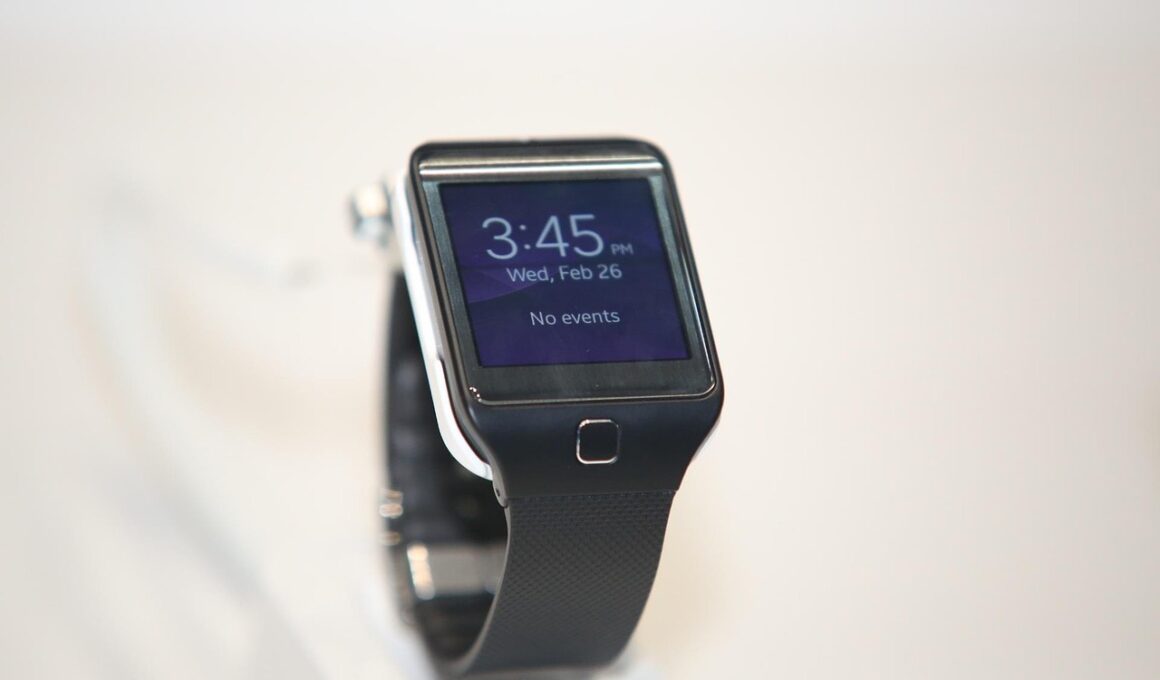Wearable Tech for Tracking Rehabilitation Progress in Senior Patients
As seniors navigate their rehabilitation journeys, wearable technology emerges as a vital resource. These devices not only monitor vital statistics but also offer insights into physical activity levels. For senior patients recovering from surgeries or illnesses, the use of wearables allows for real-time data collection. This data is invaluable for healthcare providers as it helps refine rehabilitation plans. By tracking metrics such as step counts, heart rate, and sleep quality, wearables provide a comprehensive view of a patient’s health. This enables caregivers to intervene when necessary, promoting timely responses to issues that may arise during recovery. Additionally, wearable devices can encourage seniors to remain active, fostering a sense of accomplishment and independence. These technologies also facilitate communication between patients and healthcare professionals through shared data, making it easier to assess progress. In today’s tech-driven world, wearable devices are changing how rehabilitation is approached, enhancing the quality of care received by senior patients. From motivating them to engage in physical activities to providing essential data, wearables are redefining recovery.
The Impact of Wearables on Senior Rehabilitation
Wearable technology plays a pivotal role in modernizing rehabilitation approaches for seniors. These devices are designed to integrate easily into daily routines, promoting consistent use among elderly patients. Their user-friendly interfaces ensure that seniors can navigate them without frustration, leading to higher adherence rates. One key advantage is the ability to collect longitudinal data, enabling practitioners to observe trends over time. For instance, regressions in physical performance are more easily identified, allowing for targeted interventions. Wearables can also provide motivational feedback, encouraging seniors to meet rehabilitation milestones. This positive reinforcement helps boost their confidence and reinforces healthy behaviors during recovery. Moreover, the community aspect often found in some wearable technology platforms allows patients to connect with peers. This sharing experience can enhance motivation and provide emotional support during the rehabilitation process. Furthermore, caregivers and family members can stay informed about the patient’s progress through shared applications. Overall, the broad capabilities of wearables facilitate a comprehensive approach to rehabilitation tailored specifically for senior patients, making the recovery journey more effective and enjoyable.
One of the most significant features of wearable technology is its ability to track progress over time. Historically, rehabilitation has relied on subjective assessments, which can be inconsistent. However, wearables provide objective data that can pinpoint specific areas needing improvement. These insights allow healthcare providers to personalize rehabilitation plans, addressing individual patient needs. For example, a physical therapist might adjust exercises based on accurate heart rate data from the wearable. Thus, this technology enhances the overall quality of care. Moreover, tracking metrics like mobility levels and exercise frequency can motivate seniors to stay engaged in their recovery activities. This continuous monitoring fosters accountability, helping patients adhere to their prescribed plans. With the convenience of smartphones, data collected can easily be shared with healthcare providers. This real-time access ensures constant communication, allowing for prompt changes to treatment strategies when necessary. Ultimately, wearable technology removes much of the guesswork in rehabilitation, paving the way for a more informed and scientific approach to patient care for seniors, ensuring they achieve successful recovery outcomes.
Choosing the Right Wearable for Seniors
When selecting a wearable device for senior patients, several factors should be taken into consideration to ensure optimal usability. First and foremost, the device should be comfortable and lightweight. Seniors may already have physical limitations, so a bulky or heavy gadget can hinder their daily activities. It’s essential to choose a device with clear display options, allowing for easy visibility even with potential eyesight issues. Additionally, robust battery life is crucial; devices that require frequent charging may frustrate users. User-friendly interfaces with simple navigation buttons will make the adoption process smoother. Another significant consideration is the type of metrics the wearable tracks. Some are focused solely on physical activity, while others offer comprehensive health monitoring, including heart rate and sleep quality. Finding a balance between desired features and ease of use will lead to better patient engagement. Moreover, connectivity to smartphones or home systems facilitates easy data sharing with healthcare professionals, creating a comprehensive care strategy. Ultimately, finding a wearable that aligns with the specific needs and preferences of senior patients will yield the best results in their rehabilitation endeavors.
Senior patients using wearable technology can experience transformative benefits throughout their rehabilitation journeys. Impressive advancements in this field allow for data-driven practices that can significantly improve patient outcomes. Transparency in health metrics encourages seniors to take charge of their rehabilitation, increasing compliance and self-motivation. Key platforms offer not just physical health metrics but integrate messaging systems, allowing patients to stay connected with healthcare providers whilst on the go. This immediate feedback can help address concerns or uncertainties as they arise, resulting in quicker resolutions to potential risks. Additionally, many wearables come equipped with emergency features, providing peace of mind to both patients and their families. In the event of a fall or sudden health issue, timely alerts can be sent to caregivers or emergency contacts. Therefore, the integration of advanced technology not only facilitates a better recovery experience but also enhances safety. As the landscape of rehabilitation continues to evolve, embracing wearable technology is paramount in supporting the unique needs of senior patients. Ultimately, engaging seniors with this technology can open new pathways toward lasting health improvements.
Future Trends in Wearable Technology for Seniors
The future of wearable technology for seniors looks promising, as ongoing innovations continue to enhance capabilities and user experiences. As devices become more sophisticated, features may expand to include more holistic health monitoring aspects. Future wearables may not only track traditional metrics but also analyze emotional well-being through biometric assessments or AI-driven algorithms. This deeper understanding can help formulate comprehensive rehabilitation plans that account for both physical and mental health needs. Furthermore, increased industry collaboration can lead to interoperable devices, allowing different brands to share data seamlessly. This interoperability ensures a cohesive healthcare experience, where data from various devices can contribute to a complete health profile. Additionally, advancements in artificial intelligence will lead to more personalized recommendations for users based on their unique data patterns. Enhanced telehealth integration is also expected, allowing remote check-ups and ongoing support through wearables. As technology becomes more accessible, barriers around the adoption of wearable devices will continue to decrease. The ongoing development of these technologies will create solutions specifically designed for senior populations, allowing for tailored approaches that ultimately improve rehabilitation outcomes.
As wearable technology becomes increasingly prevalent, its role in rehabilitation for seniors cannot be understated. The integration of these devices has the potential to revolutionize how elderly patients approach recovery, offering an array of features that were once unimaginable. By continuously monitoring vital signs, enabling communication with healthcare professionals, and providing motivation, wearables offer a unique approach to recovery. Their ability to facilitate early detection of complications can improve overall patient safety. Moreover, as the technology evolves, it will become more refined and personalized to meet the specific needs of seniors. These advancements will not only empower seniors but also the professionals overseeing their care. Additionally, educational initiatives surrounding wearable technology are vital in promoting awareness and encouraging adoption among seniors. As families become more informed about these tools, they can foster a supportive environment that emphasizes active participation in the rehabilitation process. Moving forward, it is crucial to advocate for the continued development and integration of wearable technology. This will ensure that senior patients receive quality care while navigating their rehabilitation journeys with confidence and independence.


